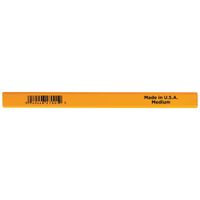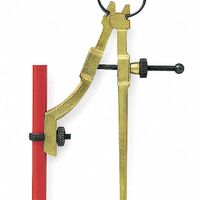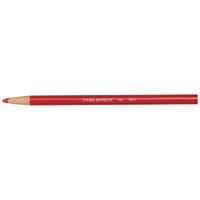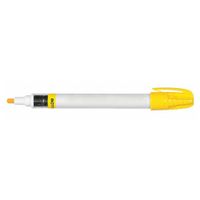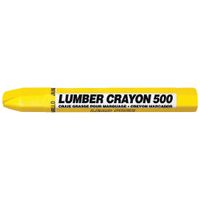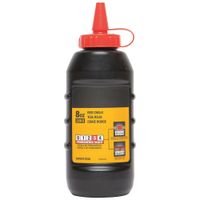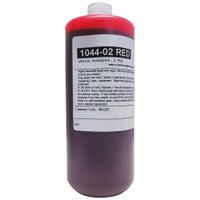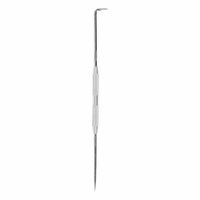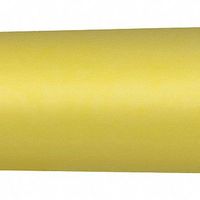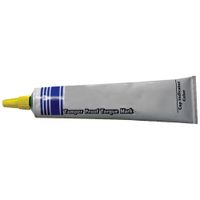Call +(254) 703 030 000 / 751 483 999 / 721 704 777
- Home
- Tools
- Measuring Layout Tools
- Marking Tools
.....Read More
Frequently Asked Questions
What are the best industrial paint markers for labeling items in production settings?
The best industrial paint markers for labeling items in production settings are those that offer durability, visibility, and versatility. Here are some top choices:
1. **Sharpie Industrial Paint Markers**: Known for their reliability, these markers offer high-temperature resistance and are suitable for marking on metal, glass, plastic, and wood. They provide bold, permanent markings that withstand harsh conditions.
2. **Dykem Brite-Mark H20**: These markers are water-based, making them environmentally friendly while still providing vibrant, long-lasting colors. They are ideal for surfaces like metal, rubber, plastic, and glass.
3. **Markal Pro-Line HP**: Designed for high-performance applications, these markers offer excellent adhesion and resistance to oil, grease, and water. They are perfect for rough, rusty, or dirty surfaces.
4. **Uni-Paint PX-20**: These oil-based markers are known for their opaque, fade-resistant ink that works well on a variety of surfaces, including metal, wood, and plastic. They are ideal for both indoor and outdoor use.
5. **Sakura Solidified Paint Markers**: These solidified paint sticks are excellent for marking on rough surfaces. They are weather-resistant and can write on wet, oily, or rusty surfaces.
6. **Artline Paint Markers**: Offering a wide range of colors, these markers are suitable for various surfaces and provide quick-drying, water-resistant ink.
7. **Posca Paint Markers**: Known for their versatility, these markers are water-based and can be used on metal, glass, plastic, and more. They offer vibrant colors and are easy to use.
When choosing a paint marker, consider the specific requirements of your production environment, such as surface type, exposure to elements, and the need for precision or bold markings.
How do lumber crayons differ from regular crayons for marking logs and timber?
Lumber crayons differ from regular crayons in several key ways, primarily designed to meet the specific needs of marking logs and timber in industrial and outdoor environments.
1. **Composition**: Lumber crayons are made from a harder, more durable wax or a combination of wax and other materials like clay or chalk. This composition allows them to withstand rough surfaces and varying weather conditions, unlike regular crayons which are softer and more prone to breaking.
2. **Durability**: The robust nature of lumber crayons ensures they do not crumble or wear down quickly when used on rough, porous surfaces like wood. Regular crayons, designed for paper, lack this durability and can break or wear out rapidly on timber.
3. **Visibility**: Lumber crayons are formulated to produce highly visible marks that can be seen clearly on wood, even from a distance. They often come in bright, fluorescent colors that stand out against the natural tones of wood. Regular crayons may not provide the same level of visibility, especially on darker or rougher surfaces.
4. **Weather Resistance**: Lumber crayons are designed to be weather-resistant, maintaining their visibility and adherence in rain, snow, or sunlight. Regular crayons can fade or wash away when exposed to the elements.
5. **Application**: Lumber crayons are specifically designed to mark on wet, dry, rough, or smooth wood surfaces, making them versatile for various logging and timber applications. Regular crayons are primarily intended for smooth, dry surfaces like paper.
6. **Shape and Size**: Lumber crayons are often larger and more robustly shaped to provide a firm grip and withstand the rigors of industrial use, whereas regular crayons are smaller and more delicate, suitable for artistic purposes.
What materials can grease pencils effectively mark?
Grease pencils, also known as wax pencils or china markers, are versatile tools that can effectively mark a wide range of materials due to their unique composition of wax and pigment. They are particularly useful for marking non-porous surfaces where traditional pencils or pens might not work effectively. Here are some materials that grease pencils can effectively mark:
1. **Glass**: Grease pencils can write smoothly on glass surfaces, making them ideal for labeling glassware or creating temporary markings on windows.
2. **Metal**: They can mark on various metals, including stainless steel and aluminum, which is useful in industrial settings for temporary labeling or measurements.
3. **Plastic**: Grease pencils work well on plastic surfaces, such as containers, bags, or equipment, providing a clear and removable mark.
4. **Ceramics**: They can be used on ceramic tiles or pottery, useful for artists or in construction for marking tiles before cutting.
5. **Wood**: While not as effective as on non-porous surfaces, grease pencils can still mark on smooth, finished wood surfaces.
6. **Paper**: They can be used on glossy or coated paper where regular pencils might not leave a visible mark.
7. **Rubber**: Grease pencils can mark on rubber surfaces, useful in manufacturing or automotive industries.
8. **Stone**: They can be used on polished stone surfaces for temporary markings in construction or art.
9. **Fabric**: On certain fabrics, especially those with a smooth finish, grease pencils can be used for temporary markings in tailoring or sewing.
Grease pencils are favored for their ability to create marks that are both visible and removable, making them suitable for temporary labeling, art projects, and industrial applications.
How do you properly use a carpenter's pencil for making layout lines on wood?
To properly use a carpenter's pencil for making layout lines on wood, follow these steps:
1. **Sharpening**: Use a utility knife to sharpen the pencil. Carve the wood away from the graphite to expose a broad, flat edge. This shape allows for more precise lines and better control.
2. **Holding the Pencil**: Grip the pencil firmly but comfortably. Hold it at a slight angle to the wood surface to ensure the flat edge makes full contact, providing a consistent line.
3. **Marking Technique**: For straight lines, use a ruler or a straight edge as a guide. Align the flat edge of the pencil with the guide and draw the line with steady pressure. For curves or freehand lines, maintain a consistent angle and pressure to ensure uniformity.
4. **Line Thickness**: Adjust the angle and pressure to control line thickness. A steeper angle and lighter pressure yield thinner lines, while a flatter angle and firmer pressure produce thicker lines.
5. **Visibility**: Ensure the lines are visible but not too thick, as overly thick lines can lead to inaccuracies in cutting or measuring.
6. **Erasing Mistakes**: Use a sandpaper block or a pencil eraser to remove unwanted lines. Lightly sand the area to avoid damaging the wood surface.
7. **Maintenance**: Regularly sharpen the pencil to maintain a flat edge for precise marking. Store it in a dry place to prevent the wood from swelling or the graphite from breaking.
By following these steps, you can effectively use a carpenter's pencil to make accurate and clear layout lines on wood, aiding in precise cutting and assembly.
What is the purpose of chalk line reels and how are they used on construction sites?
Chalk line reels are essential tools in construction, used primarily for marking straight lines over long distances on various surfaces. They consist of a string coated with chalk powder, housed in a reel or casing. The primary purpose of a chalk line reel is to provide a quick, efficient, and accurate method for creating straight reference lines, which are crucial for ensuring precision in construction tasks.
To use a chalk line reel, the string is first pulled out from the reel and stretched tightly between two points on the surface where a straight line is needed. The string is then snapped against the surface, leaving a straight chalk line. This line serves as a guide for cutting, aligning, or positioning materials such as tiles, bricks, or lumber. The chalk used can be in various colors, with blue and red being common choices, depending on the visibility required against different backgrounds.
On construction sites, chalk line reels are invaluable for tasks such as laying out foundations, framing walls, installing flooring, and aligning tiles. They help ensure that structures are built accurately and according to design specifications. The tool is favored for its simplicity, portability, and ability to create long, straight lines quickly without the need for complex equipment.
Overall, chalk line reels are a fundamental tool in construction, aiding in precision and efficiency, and are used by professionals to maintain high standards of workmanship.
How does torque marking paste indicate tampering or loosening of fasteners?
Torque marking paste, also known as tamper-evident paste or torque seal, is a brightly colored, quick-drying compound applied to fasteners such as bolts, nuts, and screws. It serves as a visual indicator to detect any movement or tampering after the initial application. Here's how it works:
1. **Application**: The paste is applied across the junction of the fastener and the surface it secures. It forms a continuous line or mark that bridges the fastener and the substrate.
2. **Drying and Bonding**: Once applied, the paste dries and adheres to both the fastener and the surface, creating a brittle bond. This bond is sensitive to movement, making it an effective indicator of any changes.
3. **Visual Indicator**: The paste is typically brightly colored, making it easily visible. This visibility allows for quick inspection without the need for tools or disassembly.
4. **Detection of Movement**: If the fastener is tampered with or begins to loosen, the paste will crack or break. The continuous line will be disrupted, providing a clear visual cue that the fastener has moved.
5. **Inspection**: During routine inspections, maintenance personnel can quickly assess the integrity of fasteners by checking the condition of the torque marking paste. Any disruption in the paste indicates potential issues that may require further investigation or re-tightening.
6. **Security and Safety**: By providing a simple and effective method to monitor fastener integrity, torque marking paste enhances security and safety in various applications, including automotive, aerospace, and industrial machinery.
In summary, torque marking paste acts as a tamper-evident seal that visually indicates any movement or loosening of fasteners, ensuring that they remain secure and function as intended.
What are the advantages of using metal marking scribers for machining references?
Metal marking scribers offer several advantages for machining references:
1. **Precision**: Scribers provide highly accurate and fine lines, essential for precise machining tasks. Their sharp points allow for exact marking, ensuring that the reference lines are clear and easy to follow.
2. **Durability**: Made from hard materials like tungsten carbide or hardened steel, scribers are durable and maintain their sharpness over time, even when used on tough metal surfaces.
3. **Versatility**: They can be used on a variety of materials, including metals, plastics, and ceramics, making them versatile tools in a machine shop.
4. **Non-erasable Marks**: Unlike pencil or ink, the marks made by scribers are permanent and do not smudge or fade, providing a reliable reference throughout the machining process.
5. **Cost-Effective**: Scribers are relatively inexpensive tools that do not require consumables like ink or lead, making them a cost-effective option for marking.
6. **No Power Required**: Being manual tools, scribers do not require electricity or batteries, making them convenient and portable for use in various settings.
7. **Minimal Surface Damage**: While they create permanent marks, scribers do not significantly damage the surface of the material, preserving the integrity of the workpiece.
8. **Ease of Use**: They are simple to use, requiring minimal training, which makes them accessible to both novice and experienced machinists.
9. **Compatibility with Other Tools**: Scribers can be used alongside other measuring and marking tools, such as calipers and squares, to enhance accuracy and efficiency in setting up machining operations.
These advantages make metal marking scribers an essential tool in machining for creating reliable and precise references.
